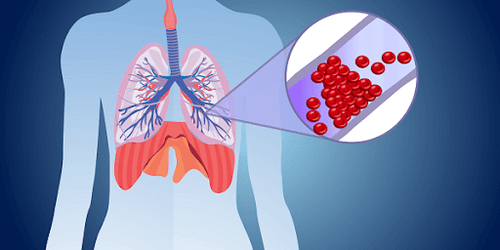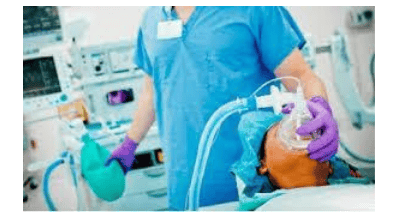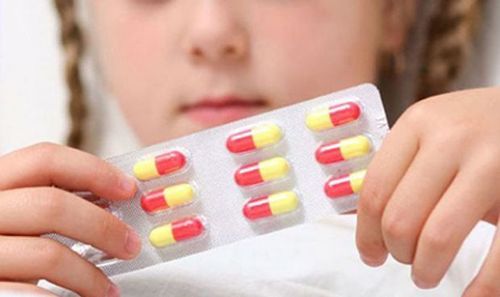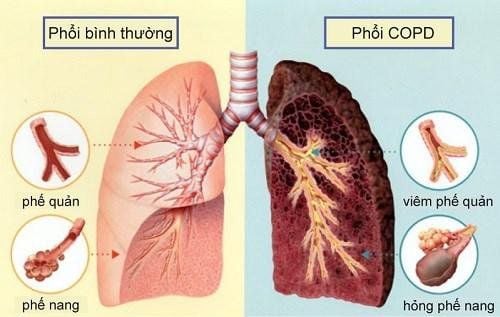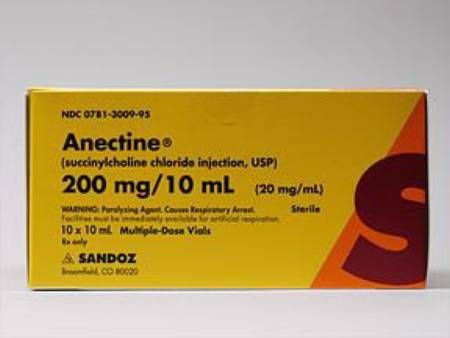This is an automatically translated article.
The article was consulted with an Anesthesiologist - General Surgery Department - Vinmec Nha Trang International General Hospital.Malignant hyperthermia in anesthesia is a complication that occurs when anesthetics are used to perform anesthesia for surgery. This emergency situation poses a serious threat to the patient's life and therefore requires proper diagnosis and prompt treatment.
1. Overview
Malignant hyperthermia in anesthesia is also known as malignant hyperthermia - a complete complication of anesthesia. By definition, Malignant Hyperthermia is a drug-induced disease affecting individuals with myopathy characterized by increased skeletal muscle catabolism.Overall, the incidence of malignant hyperthermia in anesthesia in Europe is approximately 1 in 200,000 to 1 in 300,000 cases. There are no specific statistics in Vietnam. Epidemiological factors and causative agents of the disease include:
Inheritance of dominant trait; More common in men; Rarely in infants; Reduced when over 50 years old; Mortality rates are 50% lower in Western countries; The incidence is 1/15,000 in children and 1/50,000 or 1/150,000 in adults.
2. Cause

Tình trạng sốt cao ác tính trong gây mê xảy ra đột ngột thường gặp ở người bị rối loạn nhiễm sắc thể.
Ryanodine (RyR1): Most common cause; CACNA1S. Malignant high fever is often triggered by some anesthetics such as:
Halogen volatile anesthetics: Halothane, Isoflurane, Sevorane, Desflurane, Enflurane; Succinylcholine (aka suxamethonium) depolarizing muscle relaxants: May shorten the latency period and ease the onset of malignant hyperthermia. When these drugs enter the body of people with chromosomal disorders, they will cause a massive release of calcium from the sarcoplasmic reticulum (intracellular), leading to a violent muscle contraction reaction. The consequences of the above process promote:
Glycogen breakdown; Generate multiple lactate products; Hyperkalemia ; Ventricular arrhythmias; Myoglobinuria.
3. Clinical manifestations
Malignant high fevers in anesthesia usually begin with the following symptoms:Increased heart rate, breathing rate; Increase CO2; Hypertension ; Ventricular arrhythmias due to autonomic nervous system stimulation and hyperkalemia; Severe increase in muscle tone, first with muscle spasms, then other muscle groups; High and rapid body temperature, usually 1 - 2°C every 5 minutes; Acidosis of blood; Arterial hypoxia; Musculoskeletal activity; Small Myoglobin.
4. Diagnosis

chẩn đoán giúp phân biệt tăng thân nhiệt ác tính với ngộ độc thuốc
Adrenal myeloma; Storm armor ; Fever due to infection; Insufficient anesthesia and/or analgesia; Pheochromocytoma; Inflammatory response syndrome; Hypoxic encephalopathy; Anaphylaxis; Drug poisoning ; Other muscle diseases, especially muscular dystrophy.
5. Treatment of malignant high fever
5.1. Alert stage for many other health workers to come to help; Immediately stop halogenated anesthetics and suxamethonium. Change the entire breathing system of the anesthetic machine, and increase ventilation with pure oxygen 10 liters/min; Intravenous injection of Dantrolene 2-3mg/kg (maximum 10mg/kg) continuously until symptoms of tachycardia, muscle contractions, hypercapnia and hyperthermia are controlled; Treat metabolic acidosis with 1.4% sodium bicarbonate NaHCO3 solution according to blood gas test. If the test has not been done, use a dose of 1-2 ml/kg; Hypothermia by many means: Wash stomach, bladder, rectum with cold 0.9% saline solution, cool wipe or use heat exchanger pad. Continue monitoring esophageal temperature to prevent secondary hypothermia until reaching 38°C; Treat arrhythmias by controlling acidosis and hyperkalemia. If it persists, take antiarrhythmic drugs. However, do not use calcium channel blockers because it will make it worse and cause cardiac arrest; Monitor CO2 concentration in exhaled air, do blood gas tests, electrolytes, blood coagulation function and kidney function; Treatment of hyperkalemia by hyperventilation, alkalinization of the blood, intravenous infusion of insulin in glucose solution. Calcium chloride 2 - 5 mg/kg can be used if hyperkalemia is severe; Maintain urine output of 2ml/kg/hour. Place central venous and arterial catheters for hemodynamic monitoring. Infusion of fluids and use of diuretics to prevent renal failure. 5.2. The period after the attack The patient is monitored in the postoperative recovery room with a special regimen to prevent the recurrence of malignant high fever after treatment; Maintain Dantrolene 1mg/kg every 6 hours during the next 1-2 days. Then, if the patient is able to drink, administer the same dose within 24 hours. If necessary, it can be extended longer; Monitor blood gases, cardiac enzymes, electrolytes, coagulation function, body temperature, blood myoglobin and urine every 6 hours until stable. In particular, the core temperature must be continuously monitored until it stabilizes to a normal level; Inform family members about malignant hyperthermia under anesthesia. Instruct the patient to disclose this information to the anesthesiologist if further surgery is required.6. Prognosis and prevention

Tăng thân nhiệt ác tính trong gây mê cần được điều trị kịp thời
Because this complication often occurs suddenly in patients with abnormal genes, it is difficult to prevent. When examining a patient, a doctor needs to carefully take the history of the patient and family members. At the same time, the medical facility performing anesthesia must also have enough drugs and facilities to treat if an accident occurs. Specifically, all facilities that use vapor anesthetics should have dantrolene available and have a management strategy in place.
In summary, malignant hyperthermia is a drug-related gene disorder with a relatively small incidence. The disease has no specific symptoms, so it is very important to differentiate and exclude. Malignant hyperthermia in anesthesia is curable and mortality is low if diagnosed early and treated promptly.
Vinmec International General Hospital is a general hospital that performs the function of examination, treatment and prevention of many diseases. Accordingly, to improve the process of health examination, emergency and surgical treatment, Vinmec has been using modern anesthetic medical equipment and anesthetic drugs suitable for the patient's condition, avoiding Maximize dangerous complications during anesthesia.
Please dial HOTLINE for more information or register for an appointment HERE. Download MyVinmec app to make appointments faster and to manage your bookings easily.




